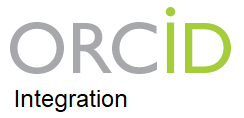Tromboelastografía en el manejo de la paciente obstétrica
Autores/as
DOI:
https://doi.org/10.37980/im.journal.revcog.20222119Palabras clave:
tromboelastografía, hemorragia post parto, mortalidad maternaResumen
La mortalidad materna varía mucho a nivel mundial, siendo más alta en países en vías de desarrollo o en áreas rurales. Las medidas tomadas a nivel local y global que estén dirigidas a reducir esta brecha y la mortalidad materna como tal son de un valor incalculable, pero a pesar de contar con la tecnología y los medicamentos requeridos, su uso no se traduce en una reducción evidente en término de muertes. Una de las condiciones con mayor prevalencia es la hemorragia postparto, la cual ocupa el primer lugar en muchos países y se cita como una de las tres primeras causes a nivel mundial.
Hay muchas guías relacionadas con el manejo de la hemorragia postparto, pero en la mayoría se deja por fuera o se menciona poco la utilidad de una herramienta disponible y relativamente económica, como lo es la tromboelastografía. En este artículo discutiremos la misma, sus fortalezas y debilidades, así como el papel que puede tener la misma en el manejo de la paciente que se presenta con esta condición.
Archivos adicionales
Publicado
Número
Sección
Licencia
Derechos de autor 2022 Infomedic Intl.Derechos autoriales y de reproducibilidad. La Revista RevCog es un ente académico, sin fines de lucro, que forma parte de la Sociedad Centroamericana de Ginecología y Obstetricia. Sus publicaciones son de tipo ACCESO GRATUITO y PERMANENTE de su contenido para uso individual y académico, sin restricción. Los derechos autoriales de cada artículo son retenidos por sus autores. Al Publicar en la Revista, el autor otorga Licencia permanente, exclusiva, e irrevocable a la Sociedad para la edición del manuscrito, y otorga a la empresa editorial, Infomedic International Licencia de uso de distribución, indexación y comercial exclusiva, permanente e irrevocable de su contenido y para la generación de productos y servicios derivados del mismo.








